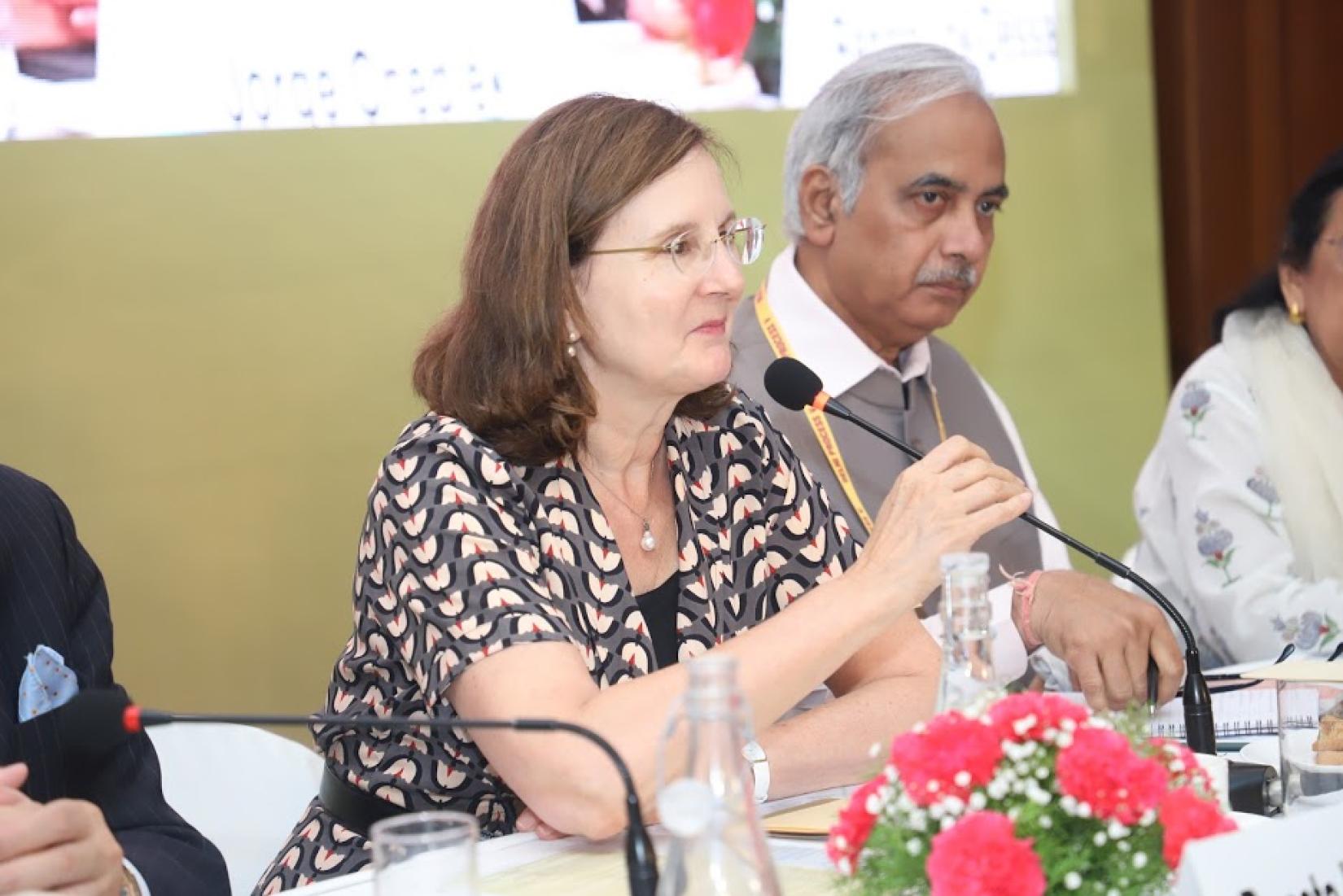Speech
Delhi Process V: South-South and Triangular Cooperation
23 August 2019
Renata Lok-Dessallien, United Nations Resident Coordinator in India
(Speech as prepared)
Mr. Jorge Chediek, Envoy of the United Nations Secretary…

Renata Lok-Dessallien, United Nations Resident Coordinator in India
(Speech as prepared)
Mr. Jorge Chediek, Envoy of the United Nations Secretary-General on South-South Cooperation
Professor Sachin Chaturvedi, Director-General, RIS
Distinguished panelists: Professor Li Xiaoyun, Mr. Chari, and Professor Chenoy,
Ladies and Gentlemen,
Namaste, and I am honoured to join you at the close of two very productive days of dialogue on critical developments shaping the contours of our future.
- As the Delhi Process enters its 5th iteration, and we take stock of lessons from BAPA + 40, the Second High-Level UN Conference on South-South Cooperation, dialogues like these serve as an important opportunity to push the academic and technical frontiers of the future of multilateral engagement.
- I am pleased UNOSSC and RIS convene this dialogue in Delhi, because the contours of that new future are being forged in India.
- South-South Cooperation is no longer the function of a specific global South with fixed, immutable borders. Today, India and China are one third of the global economy, and by 2060, in forty years, the global South could be home to 57% of the global GDP.
- We then need to rethink the terms South-South and Triangular cooperation. Perhaps we are moving towards a world order the likes of which has never existed before – based on functional specialization and enhanced cooperation modalities to achieve shared goals – where the global South has taken the lead on subjects like climate action and sustainable development – and where examples from the global South can inspire change in the “North”.
- I would like to speak specifically of India’s example in this regard.
- More recently, India’s contribution of US$ 150 million to the UN India Development Partnership Fund through the office of South-South cooperation has been a signifier of India’s commitment to Southern-owned, demand-driven, transformational sustainable development in the developing world.
- But India’s role as an enabler has a long tradition. It helped transform discriminatory political structures, established exchanges of people, expertise, and technology, and been particularly influential in creating discourses that lend strength to emerging countries.
- India’s trade and investment policies affect global prospects and change global economic governance – the New Development Bank will have the capacity to lend an average of US$ 3.4 billion by 2020. Within WTO and global trade talks India is often the voice of developing countries.
- India has expanded its grant assistance for infrastructure, renewable energy, and other sectors in other countries. During 2017-18, lines of credit totaling nearly US$ 750 million were approved for countries in Asia and Africa. India has announced a US$ 10 billion concessional line of credit to Africa over the next five years, and a grant assistance of US$ 600 million, including an India Africa Development Fund of US$ 100 million.
- India’s contribution has gone beyond financial support and international processes.
- Its Technical and Economic cooperation programme has extended capacity building to 158 countries, innovations in health have catalyzed provision of affordable vaccines and pharmaceuticals, its successful experience with the digital economy and renewables has presented solutions that can be adapted globally, and its leadership on climate action – through the International Solar Alliance, World Environment Day, the Paris Agreement, and ambitious targets and achievements and cost reductions in renewable energy, emissions, and conservation are setting standards for the world.
- We will see a showcase of these climate action initiatives in the upcoming 14th Conference of Parties to the United Nations Convention to Combat Desertification being hosted in India.
- India has demonstrated to us that South-South and Triangular Cooperation of the future must improve the capabilities of emerging countries to renegotiate the landscape of international development. It must constitute new ways of engaging beyond borders.
- The International Solar Alliance, the New Development Bank – they are not about traditional exchanges of help and assistance – but about building growth together and deciding what that growth will look like for the planet.
- South-South Cooperation must grow beyond technical cooperation and knowledge exchange to include better trade opportunities and investments. Intra-South trade levels are now 25% of global trade and FDI flows from developing countries constitute a third of all Foreign Direct Investment. South-South Cooperation must include infrastructure and connectivity, and coordination of policies and strategies among developing countries.
- And it must include new means of financing development. Development financing is key to the achievement of the SDGs, but not only through customary channels of official development assistance and bilateral flows. Like triangular cooperation has opened up new ways of operationalizing cooperation, innovative South-led financing mechanisms must open up new ways of mobilizing resources for the SDGs.
- The South was instrumental in shaping the SDGs and is now steering their implementation. They are in the vanguard of climate action, sustainability, green growth, and reducing inequalities. They are also in the vanguard of innovation – India has one of the world’s most innovative space programmes (cheapest mission to Mars and Chandrayaan which will land on the surface of the moon on 7 September).
- These cutting-edge developments are not coming from the West anymore. And it is in a stronger closer South, that we will find the solutions for tomorrow and for the rest of the world.
UN entities involved in this initiative
UN
United Nations

















